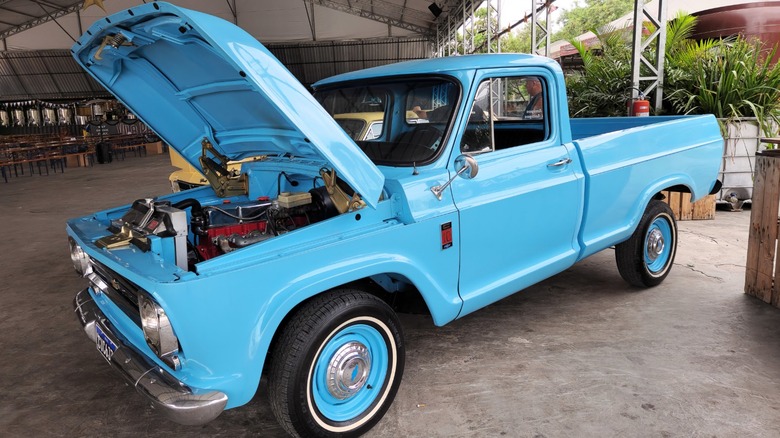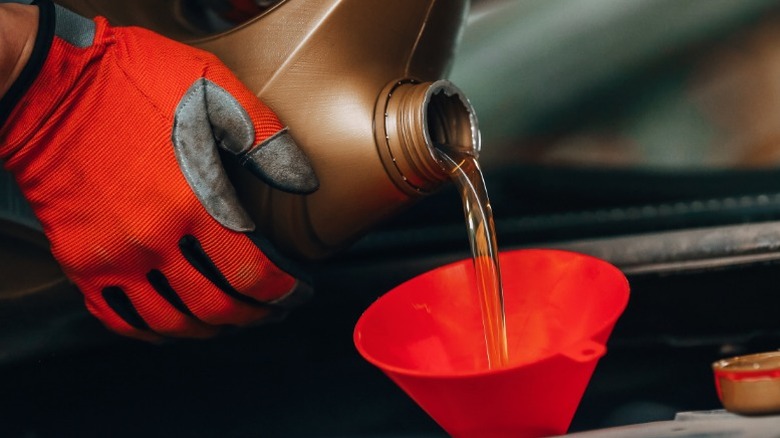What Oil Should You Use For Your Classic Car's Engine? (And How Often Should You Change It?)
Engine oil is an essential component for vehicles that rely on internal combustion engines for their power. Not only does oil provide critical lubrication for internal parts, but it also helps prevent engine overheating issues and the development of excess friction. However, despite how vital oil is for your engine's performance and health, it's subject to wear and tear and can lose its ability to provide lubrication and prevent heat buildup over time. That's why regular oil changes are so important and why your vehicle's manufacturer provides detailed information about recommended replacement intervals.
That said, not all cars use the same type and classification of engine oil. Different engines require different types of engine oil. While modern vehicles use increasingly thin (less viscous) oils, thanks to decreasing engine tolerances and clearances, most older vehicles rely on thicker or more viscous oils to provide lubrication. Classic cars, in particular, regularly use far thicker oils than are standard in many modern vehicles. Some of the oils most commonly used in classic cars include 10W-30, 10W-40 15W-40, and 20W-50.
However, that doesn't mean you can pour any thicker oil into your vintage vehicle. It's still critical that you follow the manufacturer's recommendations. If you have access to the vehicle's original owner's manual, that's the best place to check for information regarding engine oil. You can also check the oil fill cap on the engine, reach out to automotive experts, ask for assistance at an auto parts store, or search for the information online. If you're interested in learning more about classic car oil, including how often you should replace the oil in a vintage vehicle, stick around. As a former professional mechanic who has worked on innumerable classic cars, I'll break it down for you.
How often should you change the oil in your classic car?
When it comes to replacing the oil in your classic car, you'll most likely need to perform the service more frequently than you do for any new vehicles you own. While many manufacturers now recommend oil change intervals between every 5,000 and 7,500 miles, others push that range out to every 10,000 miles for vehicles that use synthetic engine oil. How often you actually need to change your oil depends on factors like the oil type, the vehicle's age, the type of engine, and more. However, in the case of classic cars, you should stick to the lower end of the recommended range, which is every 3,000 miles.
Older vehicles, and especially classic cars, tend to burn more oil as they age, necessitating more frequent oil replacements. The engines in these vehicles are less advanced than their modern counterparts, which, along with years of use, causes them to be less efficient when it comes to using oil. Replacing the oil every 3,000 miles allows the engine to maintain a healthy supply of the lubricant and helps prevent damage.
However, it's worth noting that many collectors don't drive their vintage vehicles that often. Because of this, many classic car experts recommend replacing the oil every six months or, at a minimum, once a year, whether you've put 3,000 miles on the odometer or not. That said, it never hurts to change your oil more frequently, even in a newer car. It's one of the most effective and affordable forms of automotive maintenance you can perform, and it's a great DIY auto job any beginner can tackle.

